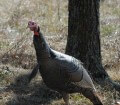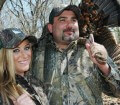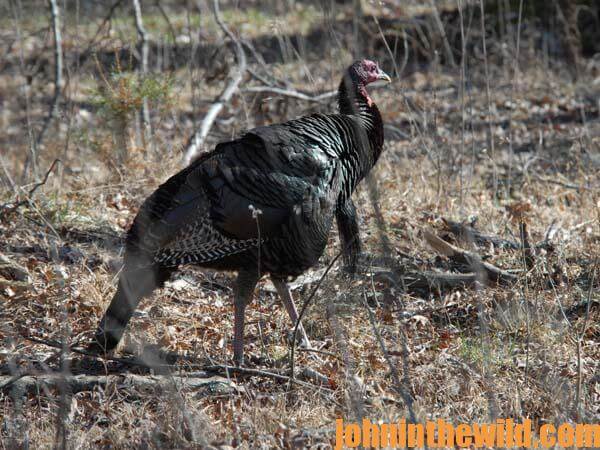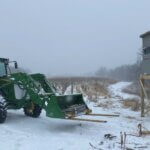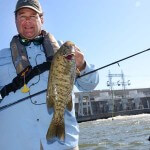John’s Note: Bringing your buddy along when hunting turkey gobblers will sometimes produce far better results than going one-on-one against the feathered fox. Even though turkey hunting is basically an individual sport, there are several reasons why two people should try hunting turkeys together. Foremost is the fellowship that comes from sharing the experience of calling, watching and bagging a turkey with a friend. Also, a turkey hunter can lengthen his season by taking a novice hunting. Making tactical decisions, calling and showing a newcomer when to shoot sharpens your own skills and allows you to hunt, even if you can’t shoot after filling your season’s limit. Often there are tactical reasons for two on a turkey. Smart old gobblers that have been shot at in the past may be call- and-man-shy. These birds can be outsmarted when two hunters combine their skills and knowledge.
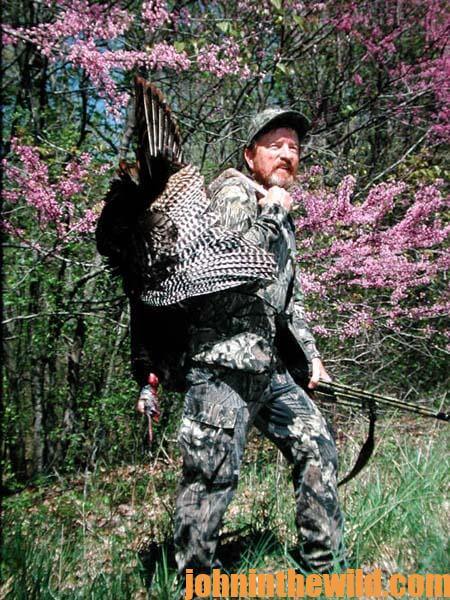 You’ll find calling-in a gobbler that another hunter has shot-at and spooked one of the toughest turkeys to call. Because he’s hunted turkeys all over the United States each spring for almost three decades, I asked David Hale, co-founder of Knight and Hale Game Calls in Cadiz, Kentucky, to explain how you can bag a shot-at gobbler by using tactics other than traditional turkey-taking methods.
You’ll find calling-in a gobbler that another hunter has shot-at and spooked one of the toughest turkeys to call. Because he’s hunted turkeys all over the United States each spring for almost three decades, I asked David Hale, co-founder of Knight and Hale Game Calls in Cadiz, Kentucky, to explain how you can bag a shot-at gobbler by using tactics other than traditional turkey-taking methods.
“My friend, Gary Mitchell, and I were the first sportsmen to hunt a section of land that the state had opened for turkey hunting some years ago,” David Hale explains. “At first light, we got a turkey gobbling hard without any difficulty. He then came in just like he was supposed to – as though I had him tied to a string. When the tom got closer, Gary shot at him but missed by about 2 feet. The turkey took off running.” Hale videotaped that hunt. Later, when he reviewed the tape, he noticed that the turkey didn’t have half of his center tail feathers.
“For the next couple of weeks, I hunted a bird that I could call at any time of the day, and he would answer,” Hale mentions. “However, at the same time he always started going in the other direction.” Late one afternoon, Hale and a hunting buddy decided to pursue this talking-and-walking tom. “I called to the turkey, and he answered me right on cue,” Hale recalls. “I’d told my buddy that the turkey might answer again as we got a little closer, but that when he got within 100 yards of us, he would take-off and move quickly in the other direction. The next time I called, he gobbled from 50-yards away and then 100 yards.”
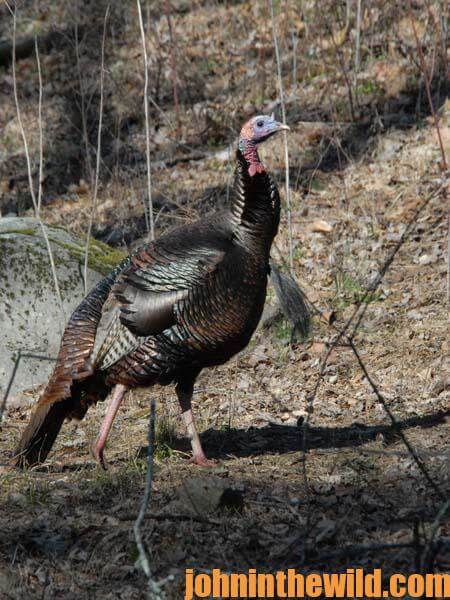 Since Hale had studied the turkey’s route during the previous hunts and knew the turkey’s final destination, Hale and his buddy hiked ahead to a knob on a hill that Hale knew the turkey would circle. “When the turkey that talked and walked started strutting and drumming, I began scratching in the leaves,” Hale says. “That gobbler came around the bend and threw his head up like a periscope. My friend was able to shoot and take him. When we retrieved the walking-and-talking tom, we fanned-out his tail feathers. He was missing the center section of the tail, just like the bird we’d shot at 2-weeks earlier.”
Since Hale had studied the turkey’s route during the previous hunts and knew the turkey’s final destination, Hale and his buddy hiked ahead to a knob on a hill that Hale knew the turkey would circle. “When the turkey that talked and walked started strutting and drumming, I began scratching in the leaves,” Hale says. “That gobbler came around the bend and threw his head up like a periscope. My friend was able to shoot and take him. When we retrieved the walking-and-talking tom, we fanned-out his tail feathers. He was missing the center section of the tail, just like the bird we’d shot at 2-weeks earlier.”
Since Hale and his hunting partner shot at the Clipped Fan Gobbler and spooked him, that tom became the hardest turkey in the world to kill. Hale could kill that bad bird only by patterning him and making scratching sounds in the leaves, a characteristic sound of a turkey but different from the calls made by turkey hunters. “When I pursue a spooked turkey or one that has been shot-at and missed, instead of calling the turkey, I hunt the turkey,” Hale emphasizes. “To hunt a gobbler that has been shot at, you will have your best chance to take him during a transition time. The Clipped Fan Gobbler was in the transition from being able to gobble and have all the hens come to him at a time when all the hens were setting. He was walking from point to point in his general area. To bag a tough turkey, you must know his destination, get there before him and sound like a hen without making a hen vocalization. Hunting with a buddy will help too.”
 To get John’s book, “The Turkey Gobbler Getter Manual,” for free, go to www.johninthewild.com/free-books to download.
To get John’s book, “The Turkey Gobbler Getter Manual,” for free, go to www.johninthewild.com/free-books to download.
To learn more about turkey hunting from the masters, get these Kindle eBooks and print books by John E. Phillips, including: “The Turkey Hunter’s Bible (available as an eBook or in paperback),” “PhD Gobblers: How to Hunt the Smartest Turkeys in the World,” “Turkey Hunting Tactics,” (also available in an audio book from http://www.audible.com/pd/Self-Development/Turkey-Hunting-Tactics), “How to Hunt Turkeys with World Champion Preston Pittman,” “The 10 Sins of Turkey Hunting with Preston Pittman” and “Outdoor Life’s Complete Turkey Hunting.” Click here to get these books.

